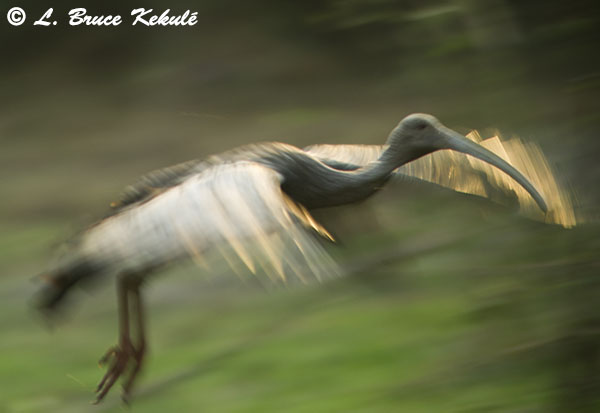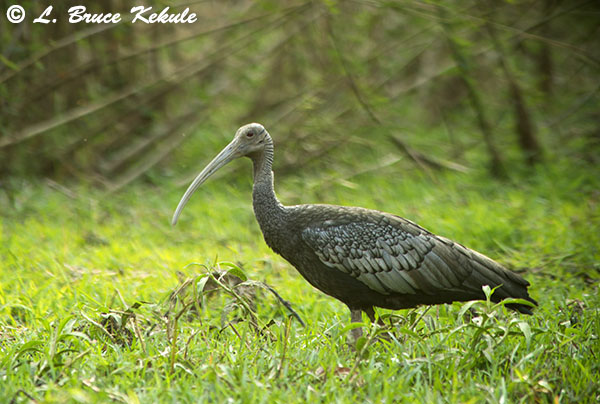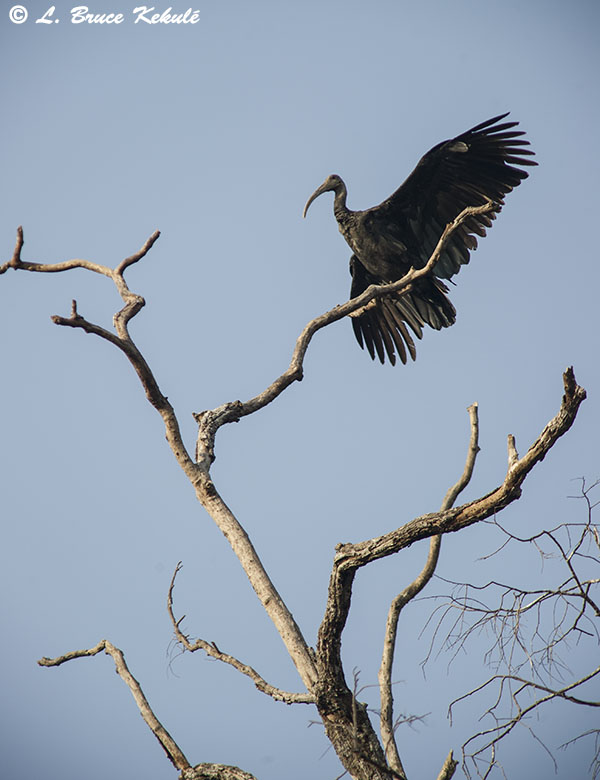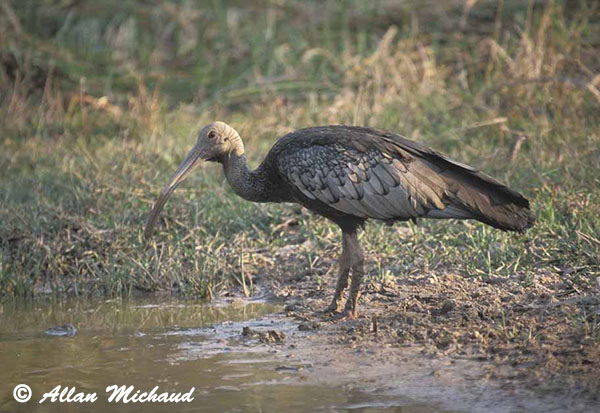Cambodia is for the Birds: photographing the Giant Ibis
The Northern Plains of Cambodia: Only 250 giant ibis left in the world…!
A giant ibis lifting off from a trapeang (waterhole) in late afternoon.
In early Feb. 2011, the flight to the city of Siem Reap near Angkor Wat in northern Cambodia took about 45 minutes by jet from Bangkok. We touched down safely and the trip was smooth arriving about noon. Going through immigration and customs was fairly quick and hassle free. I then waited out front at the coffee shop and had some lunch and a drink while I waited for my fellow wildlife photographer Allan Michaud, to show up. He lives and works in Phnom Penh and has been there for many years.
A mature giant ibis close to our photographic blind.
After an hour wait, he showed up with a car and taxi driver, and we loaded-up for the trip further north to a place arriving in the late afternoon some 60 kilometers south of the infamous temple ‘Preah Vihear’ (also known as Phra Wihan in Thai) on the Thai/Cambodian border. The centuries old structure sitting on a ridgeline has been the center of controversy, and fighting has erupted many times between the two countries both claiming ownership. The International Court of Justice in The Hague ruled in 1962 and again recently that the temple belongs to Cambodia.
A giant ibis showing wing flair on the first morning.
The taxi got us to our drop-off point safe and sound. The ride up from Siem Reap was hair-raising to say the least as the driver was continually passing slower traffic at break-neck speed around blind corners, and it was white-knuckle for me, and Allan. However, he was more use to living and riding around Cambodia and I had already experienced one bird photography tour a couple years earlier down to the flooded forest on the northern tip of Talay Sap, Southeast Asia’s largest freshwater lake close to Siem Reap. The taxi ride to the lake then was no different.
The same bird taking off.
We finally arrived in the middle of nowhere and several motorcycle taxis were waiting on us. Allan and I loaded up for the two-wheeled part of this trip. By the time we got to the ecotourism lodge set-up in Tmatboey Ibis Ecotourism Project in Kulen Promtep Wildlife Sanctuary in the Northern Plains, it was already late afternoon. We quickly had dinner and retired to our rooms being exhausted from the grueling trip to the lodge setup in the forest. The next morning, we had a quick breakfast and then at 5am, jumped on the motorcycles once again: this time with cameras and daypacks for a trip to a known ibis waterhole, also known as a ‘trapeang’ in Cambodian.
An ibis with food in its beak.
When we got to our destination, the forest was quiet. I looked around and found a tree in a depression that looked perfect for a photographic blind. We quickly set the enclosure with camouflage cloth but decided to leave it till the next morning. We then went looking for other possible ‘ibis’ haunts but these proved to be empty. The next morning, we were back in the blind before dawn and sat quietly waiting. About 7.30am, a lone mature giant ibis landed on a tree high up and called out. We both started shooting and it was great to see this amazing feathered creature on the first day.
A flock of giant ibis feeding at the trapeang.
About 8am, the thundering sound of artillery fire began north of our location. At first, it sounded like carpet-bombing that I had experienced in the Vietnam War back in 1968 while I was working there. And then it dawned on me and Alan: the Thais and Cambodians were shooting at each fighting other over the temple at ‘Preah Vihear’ again. We ignored it and decided to stay put. The next morning, it was a repeat with the thunderous noise for about an hour but it finally stopped.
We sat all day and about 4.30pm, heard and then saw a flock of five giant ibis as they swooped down and landed in front of us on the ground. These huge birds stayed for about 15 minutes foraging and feeding and after they left, my good pal and I let out a whoop. We had just photographed one of the rarest birds on earth and it was a celebration that night with drinks and food at the lodge. Looking back, the ‘Spirits of the Forest’ had answered my prayers and the feeling of accomplishment was overwhelming.
Another giant ibis photographed by my friend Allan Michaud.
My last shot of a giant ibis taking off from the trabeang in late afternoon.
The giant ibis Thaumatibis gigantean has a distinct curved bill, and at dusk and dawn have a repeated, loud, ringing call sounding like ‘a-leurk a-leurk’. The adult is dark grey and the head and upper neck are bare-skinned. There are dark bands across the back of the head and shoulder area and the pale silvery-grey wing tips also have black crossbars. The beak is yellowish-brown, the legs orange, and the eyes dark red. Juveniles have short black feathers on the back of the head down to the neck. Their bills are shorter and their eyes are brown. They consume mainly invertebrates, particularly locusts and cicadas, as well as crustaceans, small amphibians, small reptiles, and seeds.









